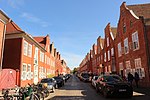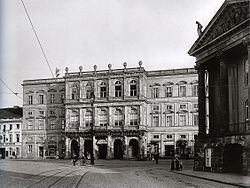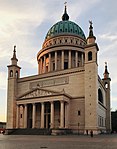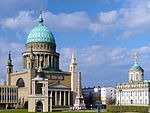Potsdam

Potsdam (German pronunciation: [ˈpɔt͡sdam] (listen)) is the capital and largest city of the German state of Brandenburg. It directly borders the German capital, Berlin, and is part of the Berlin/Brandenburg Metropolitan Region. It is situated on the River Havel some 25 kilometres (16 miles) southwest of Berlin's city centre. Potsdam was a residence of the Prussian kings and the German Kaiser until 1918. Its planning embodied ideas of the Age of Enlightenment: through a careful balance of architecture and landscape, Potsdam was intended as "a picturesque, pastoral dream" which would remind its residents of their relationship with nature and reason.The city, which is over 1000 years old, is widely known for its palaces, its lakes, and its overall historical and cultural significance. Landmarks include the parks and palaces of Sanssouci, Germany's largest World Heritage Site, as well as other palaces such as the Orangery Palace, the New Palace, the Cecilienhof Palace, or the Charlottenhof Palace. Potsdam was also the location of the significant Potsdam Conference in 1945, the conference where the three heads of government of the USSR, the US, and the UK decided on the division of Germany following its surrender, a conference which defined Germany's history for the following 45 years. Babelsberg, in the south-eastern part of Potsdam, was already by the 1930s the home of a major film production studio and it has enjoyed success as an important center of European film production since the fall of the Berlin Wall. The Filmstudio Babelsberg is the oldest large-scale film studio in the world.Potsdam developed into a centre of science in Germany in the 19th century. Today, there are three public colleges, the University of Potsdam, and more than 30 research institutes in the city.
Excerpt from the Wikipedia article Potsdam (License: CC BY-SA 3.0, Authors, Images).Potsdam
Charlottenstraße, Potsdam Historische Innenstadt
Geographical coordinates (GPS) Address Nearby Places Show on map
Geographical coordinates (GPS)
| Latitude | Longitude |
|---|---|
| N 52.4 ° | E 13.066666666667 ° |
Address
Klinikum Ernst von Bergmann
Charlottenstraße 72
14467 Potsdam, Historische Innenstadt
Brandenburg, Germany
Open on Google Maps










